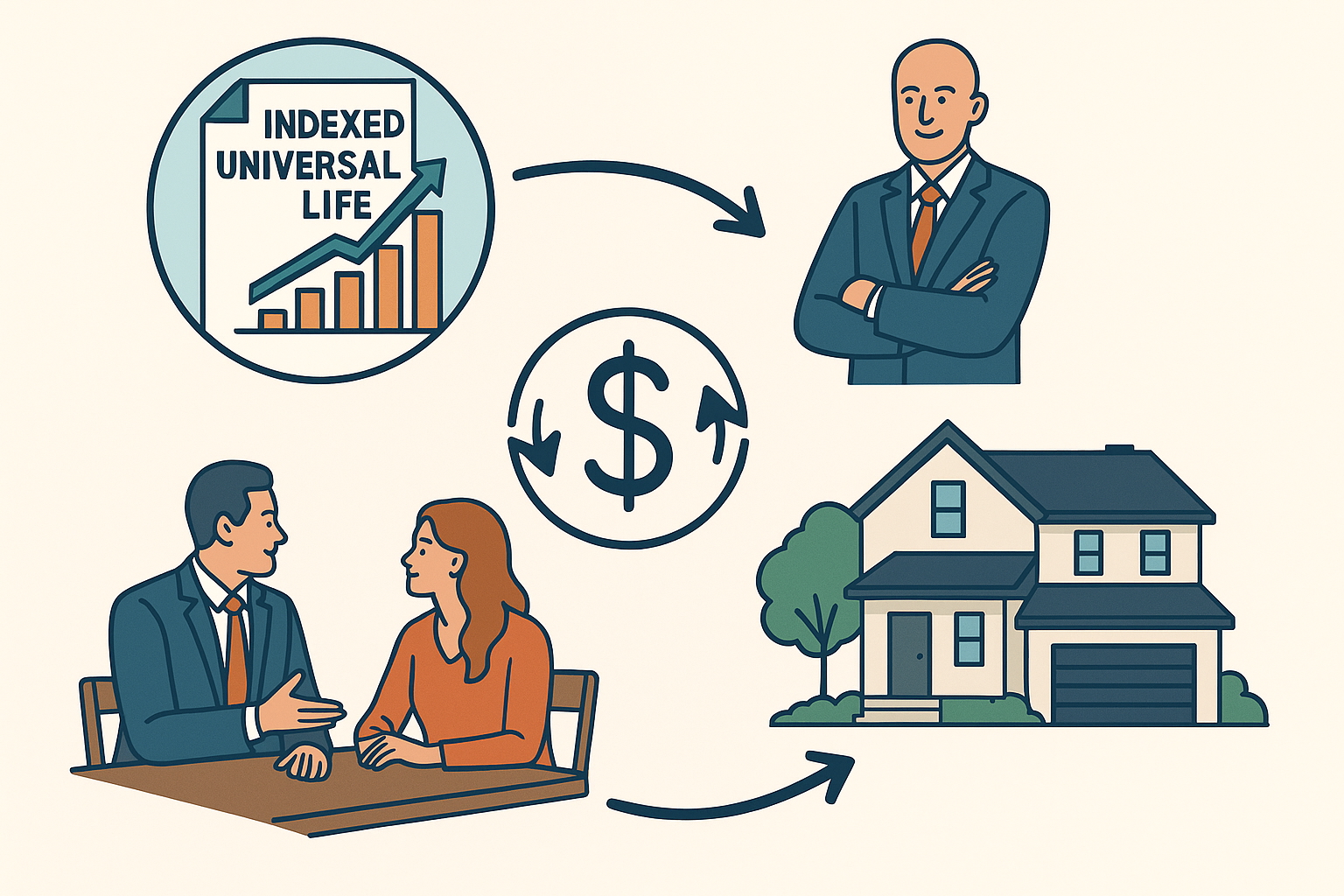For high net worth individuals looking for both protection and long-term financial opportunity, Indexed Universal Life (IUL) insurance can offer a powerful combination: life insurance coverage, tax-advantaged growth, and access to funds through policy loans. Beyond providing a death benefit, an IUL can also serve as an accumulation vehicle. One that can even be leveraged to help purchase property or invest in other opportunities without triggering taxable events.
Here’s a breakdown of how an IUL works, how it grows, and how it can be used strategically as a financial leverage tool.
What Is an IUL and How Does It Grow?
An Indexed Universal Life policy is a type of permanent life insurance. Unlike term insurance, it remains in force for life (as long as it’s funded properly), and unlike whole life, it ties its cash value growth to a market index, most commonly the S&P 500.
However, IULs do not invest directly in the market. Instead, the insurance company uses index performance to determine interest credited to the policy’s cash value, subject to two important features:
- Cap Rate – The maximum interest rate the policy can earn in a crediting period (e.g., if the cap is 10% and the index grows 14%, you get 10%).
- Floor Rate – The minimum interest rate (typically 0% or 1%), meaning if the market goes negative, you don’t lose principal or prior gains.
This design protects against market downside while offering the potential for reasonable upside, which can compound over time inside the policy.
Using IUL as an Accumulation Tool
Because of its tax-deferred growth and downside protection, IULs are often used as wealth accumulation vehicles. As the cash value grows, it can be accessed tax-free through policy loans.
Here’s how the accumulation benefits play out:
- Tax-Deferred Growth – You don’t pay taxes on the gains while they’re in the policy.
- Tax-Free Access – Policyholders can take loans against their cash value without triggering a taxable event, as long as the policy remains in good standing.
- No 59½ Rule or Required Minimum Distributions. Unlike qualified plans, IUL loans can be taken at any age, with no penalties.
Leveraging IUL to Purchase Property
One advanced strategy involves using the IUL’s accumulated cash value as collateral for external lending—or taking a policy loan to fund real estate investments or other asset purchases.
Here’s an example:
- You fund an IUL policy over 7–10 years, building $500,000 in cash value.
- Instead of withdrawing it (which could reduce the death benefit and interrupt growth), you borrow against it either through the policy itself or through a bank using the policy as collateral.
- You use the loan proceeds as a down payment on an income-producing property, while your policy value continues to grow (since it’s still technically intact and earning interest).
- You repay the loan over time using either rental income or other cash flows.
This strategy mimics a “Bank on Yourself” or “Infinite Banking” concept, allowing your dollars to work in multiple places at once. Earning in the policy while also being invested in real estate.
Important Considerations
- Loan Rates – Policy loans may have fixed or variable interest. Compare the cost of borrowing with your projected return.
- Policy Design Matters – Overfunded policies (minimizing insurance cost and maximizing cash value) work best for this approach.
- Risk of Lapse – If loans are not managed properly, or if the policy underperforms, the policy could lapse, potentially causing tax consequences.
- Liquidity Timeline – It typically takes several years to build enough cash value to make leveraging worthwhile.
Conclusion
IULs can offer more than just life insurance. With proper design and disciplined funding, they become powerful financial tools for tax-efficient growth and leverage. For real estate investors or those seeking flexible capital, an IUL offers the opportunity to borrow against yourself without sacrificing long-term financial goals.
Before implementing this strategy, consult with an advisor who understands both life insurance structure and leverage dynamics—done right, an IUL can become a cornerstone of both protection and opportunity.

